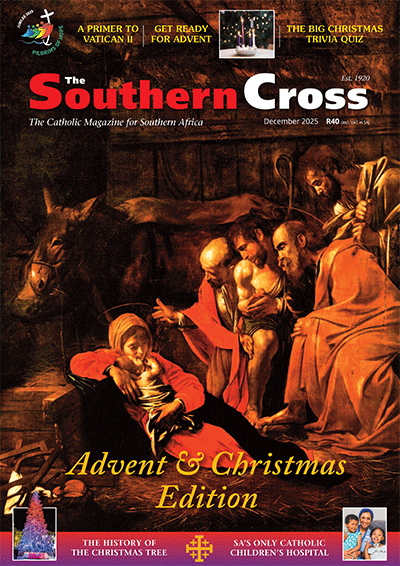Calvary was not the end
One Friday afternoon during the Jewish feast of Passover almost 2000 years ago, there died a leader of a messianic movement, accused of blasphemy by the religious leaders and executed for sedition by the Romans.
As the man�s corpse was placed in a tomb, the story of Jesus of Nazareth was expected to end, like the stories of all those other long-forgotten nonconformist religious leaders, self-proclaimed messiahs and diverse charlatans of the day.
His supporters, those not based in the Jerusalem area, made their way back home from that ultimately tragic Passover pilgrimage, defeated and dejected.
Peter and others of the group around Jesus of Nazareth, who would encounter the Risen Christ in the evening of that first Easter, eventually returned to their home province of Galilee, at Christ�s instruction.
In their confusion, even they must have contemplated their future after the heady times of following their master.
As Jesus� lifeless body lay in the tomb, the despondent followers of that man, one who seemed to promise so much and yet died in such disgrace, dispersed � and an exciting but obsolete chapter of religious fervour in Judaism seemed closed.
The man who had worked such great miracles couldn�t even save himself!
But then something inconceivable happened. On the morning of the third day, the tomb in which Jesus� dead, broken body had been interred was found empty, the burial garments neatly folded.
Then the man who just days before had been tortured and publicly executed appeared in the flesh to a woman, Mary Magdalene, alive and addressing her. It was a curious choice of encounter indeed if it was Christ�s intention to prove that he was alive, for in their society women�s testimony was not heard.
He proceeded to meet hundreds of people, including his apostles.
St Paul, first a persecutor of and then a convert to the nascent Christian movement, visited Jerusalem three times within a few years of the death and resurrection of Jesus.
For some years he lived in Antioch, to where many of Jerusalem�s Christians had migrated, including members of the new movement�s leadership.
In his first letter to the Corinthians, written before the gospels and 20-25 years after the crucifixion and resurrection of Christ, Paul notes that the risen Lord had �appeared to over 500 of our brothers [and presumably also sisters], most of whom are still alive, though some have died� (1 Cor 15:6-7).
If he were to write the epistle today, he would recall events from the early 1990s, perhaps referring to hundreds who had witnessed the release from jail of Nelson Mandela or the fall of the Berlin Wall.
Of course, the more than 500 witnesses whom Paul refers us to are long dead and therefore unavailable to us for interrogation. However, we can accept their unspoken testimony by common sense: it would have been a risky gambit for Paul to advertise hundreds of witnesses if he did not know that he could produce a credible number of them on demand.
Students of what is often called the historical Jesus are sceptical about all kinds of elements in the gospels. There is no academic consensus on the resurrection either, though many scholars, including non-Christians, agree that something extraordinary must have happened.
It is unthinkable that the followers of Christ should have exposed themselves to the mortal dangers of propagating an already crushed messianic theology, and galvanise multitudes of others in following them on their thankless and materially rewardless course, unless they were certain that something quite astonishing had taken place.
Many of the first believers in Jesus� divinity died for their conviction of having encountered the risen Christ in flesh and blood. To what purpose would they have been willing to give their lives for a fantasy, deception or lie?
To us the Resurrection is a matter of faith, but for the very first Christians, it was a fact.
Who can doubt the Resurrection? And who can believe that one who can rise from the dead is not who he said he was: the Son of God, who by his death and resurrection offers us everlasting life?
- The Look of Christ - May 24, 2022
- Putting Down a Sleeping Toddler at Communion? - March 30, 2022
- To See Our Good News - March 23, 2022





